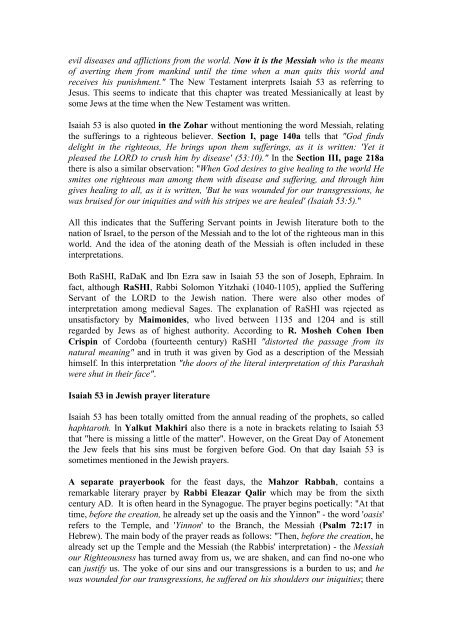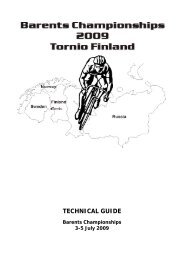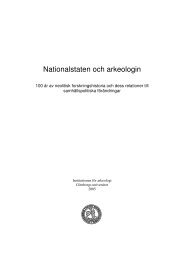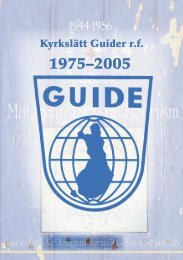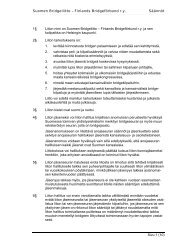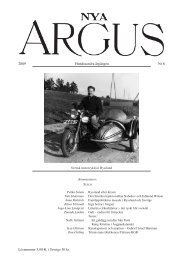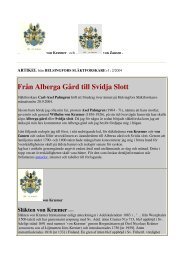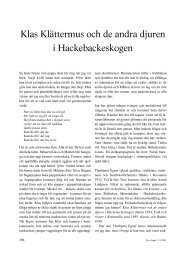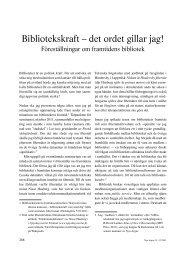PART II "Isaiah 53 and the despiced Messiah of his despiced people"
PART II "Isaiah 53 and the despiced Messiah of his despiced people"
PART II "Isaiah 53 and the despiced Messiah of his despiced people"
You also want an ePaper? Increase the reach of your titles
YUMPU automatically turns print PDFs into web optimized ePapers that Google loves.
evil diseases <strong>and</strong> afflictions from <strong>the</strong> world. Now it is <strong>the</strong> <strong>Messiah</strong> who is <strong>the</strong> means<strong>of</strong> averting <strong>the</strong>m from mankind until <strong>the</strong> time when a man quits t<strong>his</strong> world <strong>and</strong>receives <strong>his</strong> punishment." The New Testament interprets <strong>Isaiah</strong> <strong>53</strong> as referring toJesus. T<strong>his</strong> seems to indicate that t<strong>his</strong> chapter was treated Messianically at least bysome Jews at <strong>the</strong> time when <strong>the</strong> New Testament was written.<strong>Isaiah</strong> <strong>53</strong> is also quoted in <strong>the</strong> Zohar without mentioning <strong>the</strong> word <strong>Messiah</strong>, relating<strong>the</strong> sufferings to a righteous believer. Section I, page 140a tells that "God findsdelight in <strong>the</strong> righteous, He brings upon <strong>the</strong>m sufferings, as it is written: 'Yet itpleased <strong>the</strong> LORD to crush him by disease' (<strong>53</strong>:10)." In <strong>the</strong> Section <strong>II</strong>I, page 218a<strong>the</strong>re is also a similar observation: "When God desires to give healing to <strong>the</strong> world Hesmites one righteous man among <strong>the</strong>m with disease <strong>and</strong> suffering, <strong>and</strong> through himgives healing to all, as it is written, 'But he was wounded for our transgressions, hewas bruised for our iniquities <strong>and</strong> with <strong>his</strong> stripes we are healed' (<strong>Isaiah</strong> <strong>53</strong>:5)."All t<strong>his</strong> indicates that <strong>the</strong> Suffering Servant points in Jewish literature both to <strong>the</strong>nation <strong>of</strong> Israel, to <strong>the</strong> person <strong>of</strong> <strong>the</strong> <strong>Messiah</strong> <strong>and</strong> to <strong>the</strong> lot <strong>of</strong> <strong>the</strong> righteous man in t<strong>his</strong>world. And <strong>the</strong> idea <strong>of</strong> <strong>the</strong> atoning death <strong>of</strong> <strong>the</strong> <strong>Messiah</strong> is <strong>of</strong>ten included in <strong>the</strong>seinterpretations.Both RaSHI, RaDaK <strong>and</strong> Ibn Ezra saw in <strong>Isaiah</strong> <strong>53</strong> <strong>the</strong> son <strong>of</strong> Joseph, Ephraim. Infact, although RaSHI, Rabbi Solomon Yitzhaki (1040-1105), applied <strong>the</strong> SufferingServant <strong>of</strong> <strong>the</strong> LORD to <strong>the</strong> Jewish nation. There were also o<strong>the</strong>r modes <strong>of</strong>interpretation among medieval Sages. The explanation <strong>of</strong> RaSHI was rejected asunsatisfactory by Maimonides, who lived between 1135 <strong>and</strong> 1204 <strong>and</strong> is stillregarded by Jews as <strong>of</strong> highest authority. According to R. Mosheh Cohen IbenCrispin <strong>of</strong> Cordoba (fourteenth century) RaSHI "distorted <strong>the</strong> passage from itsnatural meaning" <strong>and</strong> in truth it was given by God as a description <strong>of</strong> <strong>the</strong> <strong>Messiah</strong>himself. In t<strong>his</strong> interpretation "<strong>the</strong> doors <strong>of</strong> <strong>the</strong> literal interpretation <strong>of</strong> t<strong>his</strong> Parashahwere shut in <strong>the</strong>ir face".<strong>Isaiah</strong> <strong>53</strong> in Jewish prayer literature<strong>Isaiah</strong> <strong>53</strong> has been totally omitted from <strong>the</strong> annual reading <strong>of</strong> <strong>the</strong> prophets, so calledhaphtaroth. In Yalkut Makhiri also <strong>the</strong>re is a note in brackets relating to <strong>Isaiah</strong> <strong>53</strong>that "here is missing a little <strong>of</strong> <strong>the</strong> matter". However, on <strong>the</strong> Great Day <strong>of</strong> Atonement<strong>the</strong> Jew feels that <strong>his</strong> sins must be forgiven before God. On that day <strong>Isaiah</strong> <strong>53</strong> issometimes mentioned in <strong>the</strong> Jewish prayers.A separate prayerbook for <strong>the</strong> feast days, <strong>the</strong> Mahzor Rabbah, contains aremarkable literary prayer by Rabbi Eleazar Qalir which may be from <strong>the</strong> sixthcentury AD. It is <strong>of</strong>ten heard in <strong>the</strong> Synagogue. The prayer begins poetically: "At thattime, before <strong>the</strong> creation, he already set up <strong>the</strong> oasis <strong>and</strong> <strong>the</strong> Yinnon" - <strong>the</strong> word 'oasis'refers to <strong>the</strong> Temple, <strong>and</strong> 'Yinnon' to <strong>the</strong> Branch, <strong>the</strong> <strong>Messiah</strong> (Psalm 72:17 inHebrew). The main body <strong>of</strong> <strong>the</strong> prayer reads as follows: "Then, before <strong>the</strong> creation, healready set up <strong>the</strong> Temple <strong>and</strong> <strong>the</strong> <strong>Messiah</strong> (<strong>the</strong> Rabbis' interpretation) - <strong>the</strong> <strong>Messiah</strong>our Righteousness has turned away from us, we are shaken, <strong>and</strong> can find no-one whocan justify us. The yoke <strong>of</strong> our sins <strong>and</strong> our transgressions is a burden to us; <strong>and</strong> hewas wounded for our transgressions, he suffered on <strong>his</strong> shoulders our iniquities; <strong>the</strong>re


